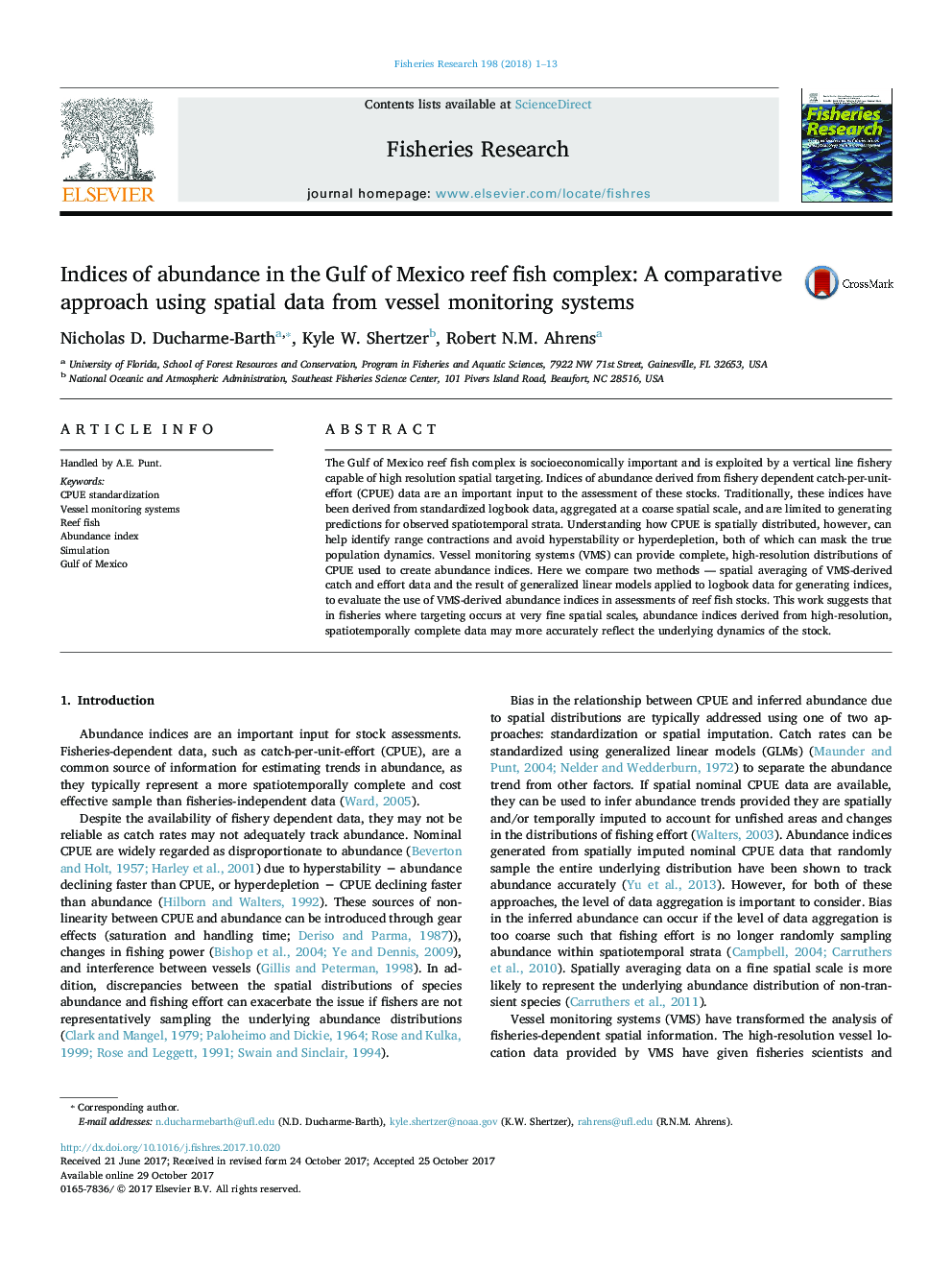| Article ID | Journal | Published Year | Pages | File Type |
|---|---|---|---|---|
| 8885585 | Fisheries Research | 2018 | 13 Pages |
Abstract
The Gulf of Mexico reef fish complex is socioeconomically important and is exploited by a vertical line fishery capable of high resolution spatial targeting. Indices of abundance derived from fishery dependent catch-per-unit-effort (CPUE) data are an important input to the assessment of these stocks. Traditionally, these indices have been derived from standardized logbook data, aggregated at a coarse spatial scale, and are limited to generating predictions for observed spatiotemporal strata. Understanding how CPUE is spatially distributed, however, can help identify range contractions and avoid hyperstability or hyperdepletion, both of which can mask the true population dynamics. Vessel monitoring systems (VMS) can provide complete, high-resolution distributions of CPUE used to create abundance indices. Here we compare two methods - spatial averaging of VMS-derived catch and effort data and the result of generalized linear models applied to logbook data for generating indices, to evaluate the use of VMS-derived abundance indices in assessments of reef fish stocks. This work suggests that in fisheries where targeting occurs at very fine spatial scales, abundance indices derived from high-resolution, spatiotemporally complete data may more accurately reflect the underlying dynamics of the stock.
Related Topics
Life Sciences
Agricultural and Biological Sciences
Aquatic Science
Authors
Nicholas D. Ducharme-Barth, Kyle W. Shertzer, Robert N.M. Ahrens,
